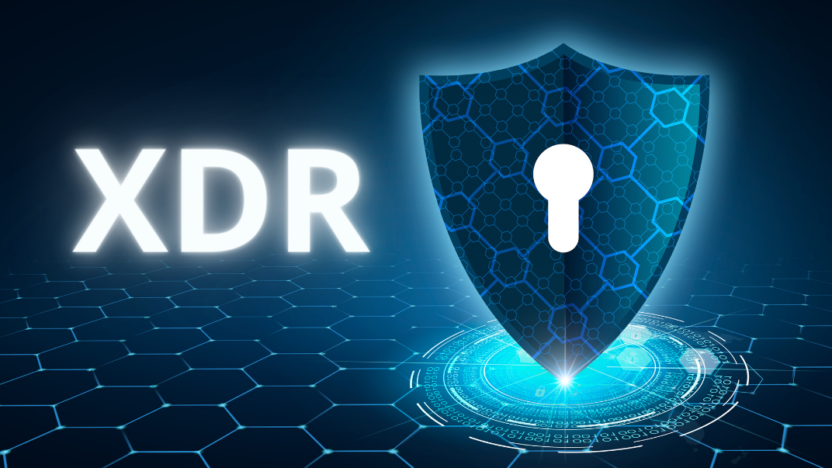As quantum computing inches closer to practical implementation, organizations must rethink their cybersecurity strategies. Traditional cryptographic defenses—cornerstones of today’s internet and data protection—may soon be rendered obsolete by quantum-powered attacks. To stay ahead of this looming threat, security leaders must begin preparing now. One of the most powerful tools in this arsenal is Extended Detection and Response (XDR), which offers a proactive, adaptable defense strategy tailored for a post-quantum world.
The Post-Quantum Computing Threat Landscape
Quantum computers leverage principles of quantum mechanics to solve complex problems exponentially faster than classical computers. This capability poses a serious risk to modern cryptographic algorithms, especially those underpinning secure communications, digital signatures, and identity management systems.
The two main categories of threats include:
- Cryptographic Breakage: Algorithms such as RSA, ECC, and Diffie-Hellman could be broken by Shor’s algorithm, enabling attackers to decrypt sensitive data or forge credentials.
- Harvest Now, Decrypt Later (HNDL): Adversaries may already be storing encrypted data with the intent to decrypt it once quantum capabilities mature.
Organizations must adopt a proactive stance—one that not only plans for future cryptographic standards but also strengthens real-time threat detection and response capabilities today.
Why XDR is Critical for Post-Quantum Readiness
Extended Detection and Response (XDR) is a cybersecurity approach that integrates and correlates data across multiple security layers—email, endpoints, servers, networks, and cloud workloads—enabling faster and more comprehensive threat detection and mitigation.
Here’s how XDR prepares your organization for post-quantum threats:
1. Adaptive Threat Detection Across All Layers
Post-quantum threats are unlikely to manifest solely through encrypted channel breaches. Attackers will combine quantum capabilities with traditional techniques—phishing, privilege escalation, lateral movement—to infiltrate systems. XDR’s ability to unify telemetry from disparate sources allows it to detect early signs of these hybrid attacks, even before a quantum-enabled exploit is executed.
2. Behavioral Analytics and Anomaly Detection
Quantum-capable adversaries will likely exhibit new behavioral patterns. XDR platforms powered by AI and machine learning can baseline “normal” behavior across users, applications, and devices—then flag deviations indicative of post-quantum tactics or pre-attack reconnaissance.
For example, a sudden surge in encrypted file access, odd certificate usage, or anomalous endpoint communications may signal preparation for post-quantum decryption or credential misuse.
3. Rapid Response and Containment
XDR streamlines investigation and response through automated playbooks and real-time correlation. In a post-quantum threat environment, speed is paramount. XDR can isolate compromised endpoints, suspend suspicious user accounts, or block network traffic—often without manual intervention.
When a breach occurs due to quantum-exploited credentials or cryptographic weaknesses, XDR ensures lateral spread is minimized while root causes are identified.
4. Integration with Post-Quantum Cryptographic Systems
As organizations begin to adopt post-quantum cryptography (PQC)—based on algorithms resistant to quantum attacks—XDR systems can monitor the integrity and behavior of these new implementations. Any tampering with PQC libraries, certificate anomalies, or rollback attempts can be instantly flagged.
XDR solutions should evolve to support telemetry from quantum-safe tools and protocols, ensuring continued visibility into future-ready infrastructure.
5. Threat Intelligence Enrichment for Quantum Indicators
XDR platforms benefit from global threat intelligence feeds. As indicators of compromise (IOCs) related to quantum-enabled actors emerge, XDR can ingest and operationalize them—detecting related tactics, techniques, and procedures (TTPs) within your environment.
By aligning detection rules with evolving threat intelligence, XDR ensures your defenses remain relevant in a post-quantum landscape.
Key Use Cases of XDR in a Post-Quantum World
➤ Zero Trust Enforcement with Quantum-Ready Monitoring
XDR complements zero trust architectures by continuously validating users and devices. In a world where identity theft could stem from broken crypto algorithms, real-time behavioral validation becomes essential.
➤ Secure Cloud and SaaS Environments
Cloud platforms will be among the first to adopt quantum-resistant encryption. XDR enables visibility into these environments and flags potential risks from misconfigurations or backward compatibility issues that may inadvertently reintroduce quantum-vulnerable components.
➤ Supply Chain Security
Quantum attackers could target third-party vendors to access upstream systems. XDR tracks activities across the supply chain and correlates it with known quantum attack signatures or unusual access patterns.
Preparing Now: A Strategic Approach
Quantum threats are not science fiction—they are a near-future reality. Here’s how security teams can leverage XDR in their preparation roadmap:
| Step | Action | Role of XDR |
|---|---|---|
| 1 | Inventory Cryptographic Assets | XDR helps identify legacy systems or certificates vulnerable to quantum threats. |
| 2 | Adopt Post-Quantum Encryption | Monitor PQC adoption with XDR for integrity and consistency. |
| 3 | Harden Detection Capabilities | Deploy behavioral analytics and integrate quantum threat intel with XDR. |
| 4 | Automate Incident Response | Use XDR playbooks to respond instantly to post-quantum compromise indicators. |
| 5 | Train and Educate | XDR dashboards can visualize attack paths and support training exercises on quantum-driven scenarios. |
Final Thoughts
While quantum computing presents a daunting challenge, it also offers an opportunity: to modernize our cybersecurity infrastructure and adopt a truly proactive approach. XDR is not a silver bullet, but it is a powerful force multiplier in this fight—integrating visibility, analytics, and rapid response into a cohesive, future-proof platform.



